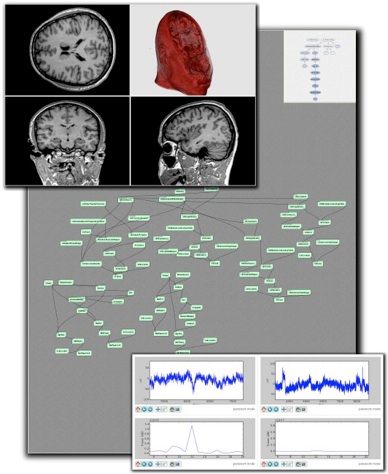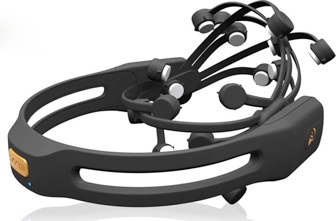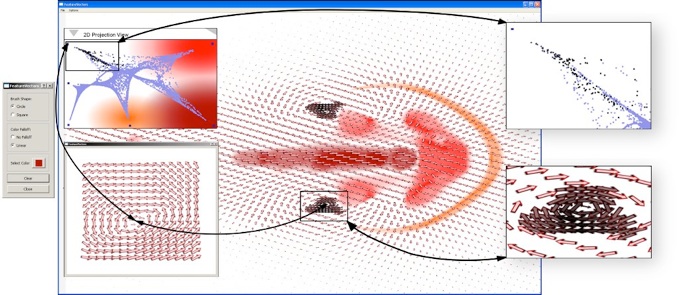The VisTrails Provenance System

Measuring and Using Cognition
Interactive Query-by-Example
VisTrails is an open-source workflow environment designed specifically to explore the difficulties and benefits of robustly recording detailed histories (provenance) associated with workflows. I am currently a member of the VisTrails Development Team and have been working with the system since joining the group in 2006. To support the majority of my research, I have developed several module packages for use in VisTrails. These packages include ITK, Numpy, SciPy, Matlab, and a suite of Signal Processing tools.

Although the system supports advanced visualization through the use of VTK, its primary role in my research is for data processing and fusion as well as comparative analysis. In this figure, data acquired from MRI and EEG are processed by the VisTrails workflow for use in analysis of a working memory experiment.
In this small example, data products from each modality are displayed individually; however, careful use of appropriate VisTrails modules are used to meaningfully fuse the various data. VisTrails is used in a wide variety of contexts and domains. The system has been used for teaching, astrophysics, oceanography, cosmology, and more.

My work with Dr. Gil Preston explores the functionality and manipulation of working memory in the human brain. This work brought the potential of measuring cognitive load and performance in the context of visualization to my attention. I have recently completed experiments in which I use electroencephalography (EEG) to directly measure cognitive performance during the interpretation of various visualizations.
Although this work is still in its relatively early stages, it shows promise in its ability to appropriately measure cognitive load during a wide range of potential tasks. I strongly believe that direct inspection of brain activity can be combined with other physiological metrics in conjunction with information theory to provide new and important evaluation methods for the efficacy of visualizations. I will be taking part in both a workshop and a birds-of-a-feather meeting this year at VisWeek 2010 discussing my views on this topic.
Recent collaboration with Dr. Joel Daniels and Dr. Luis Gustavo Nonato has resulted in a paper accepted to this year’s IEEE Symposium on Visualization (Vis 2010). In this work we address the problem of feature identification in vector fields. By taking advantage of state-of-the-art dimensionality reduction techniques, scientists may explore data in terms of features of interest to them. Scientists interact with a 2D projection of a higher-dimensional attribute space in order to color areas of interest in the dataset being explored. The projection is controlled by a set of user-specified control points, enhancing the flexibility of the overall system.
By providing mechanisms to select control points from both the dataset itself as well as from a database of analytically defined exemplars, a query-by-example paradigm is reinforced. Query-by-Example allows scientists to form idealized versions of features of interest and apply them to database-style queries on their own datasets.
